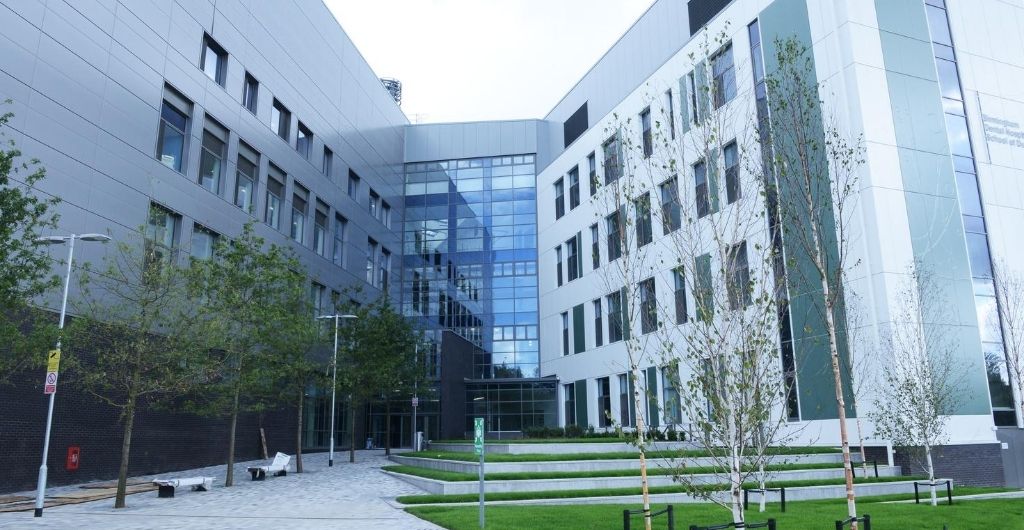
In response to the extreme challenges brought on by the COVID-19 pandemic, Birmingham Community Healthcare NHS Foundation Trust (BCHC) has pushed forward with its innovation strategy to ensure it delivers the very best care for patients in the region, achieving astounding results.
The BCHC ensured it stayed ahead of the curve by utilising world-class digital transformation technology to track its operations and coordinate the effort of its 4,500 members of staff delivering well over 100 clinical services in a wide range of community settings throughout Birmingham and the West Midlands.
It is estimated that the new technology has saved NHS team time by 20% during the pandemic, liberating information for better decision making and quicker action, equating to a saving of approximately £200,000 of public money and thousands of hours across the organisation.
It created the COVID-19 Contingency Planning Hub – a digital platform that has been key to the Trust’s efforts to manage the pandemic locally, enabling it to mobilise and galvanise staff, as well as manage the availability of PPE, keeping staff safe and ensuring they have the equipment they need.
In doing so it was able to meet the increased demand facing its vital community and specialist services, as well as accurately measure the impact of the pandemic as it evolved.
Led by the BCHC’s Information and Perfomance team, the Trust built on existing investment in transformation technology to respond rapidly to the crisis, creating the cutting-edge system that allowed the Executive and Management teams to track and visualise capacity across the organisation for a fully coordinated response.
The hub dashboard has been the most used system by managers across the organisation. There have been over 15,000 web form submissions, 300,000 items of data, 9,000 automated emails and over 50,000 dashboard views since early March. Feedback from users has been positive, reducing the need to chase information from within the organisation and freeing up team members to use their time more effectively.
Integral to the team’s emergency response was the utilisation of the Digital Process Transformation platform from NDL, a UK tech company that is driving forward innovation for the public good. Its solutions are built with a community of public sector organisations to ensure its technology empowers people to work smarter and be more productive. It provides the tools that enable NHS Trusts to create ground-breaking solutions, such as the COVID-19 Contingency Planning Hub.
Through a programme of work, led by Steve Pollard, Head of Information and Business Intelligence, BCHC developed a Trust-wide system of e-forms and dashboards using a combination of NDL’s FX programme and existing dashboard solutions.
Steve Pollard said: “Without access to centralised information, the challenge of responding to the pandemic would have been much harder. Those challenges continue to exist and evolve and having the right technology in place is crucial to making decisions quickly and based on accurate data. We were able to develop new solutions rapidly using code light development tools hosted on a scalable, virtual infrastructure. As a result, we’ve been able to achieve significant time savings that have enabled the team to focus on delivering the best patient care, instead of chasing missing information.”
Ashley Murtagh, Director of Performance Information & Contracting at BCHC said: “The hub has supported the Trust in responding to the pandemic in a coordinated and responsive way, providing centralised insight and the necessary tools to help us monitor and manage the impact effectively. The pace at which solutions have been developed, tested, deployed and adopted is testament to the team and the technical tools they have used.”
Alan Collinge, Business Intelligence and Information Services Manager added: “The toolset has provided much needed analytical insight quickly and demonstrated the speed of turnaround from concept to moving to a live environment. Our users were able to enter data into the NDL FX forms with little training and any issues that arose were quickly rectified.”
Managing logistics in a crisis:
The Trust had to quickly assess and respond to the dynamic and fast-changing landscape created by the pandemic, ensuring the system remained available and useable. As the outbreak progressed the needs of the Trust evolved, eventually leading to a system comprising of the following elements:
1) Staff infections: Employees who have been exposed to, diagnosed with, or are at risk of COVID-19 can be tracked by their managers. If they or their family members have been diagnosed, or if quarantine is required, managers can track their progress and indicate their status. Managers are also automatically emailed when an employee is due to return to work, or if their status would otherwise change.
2) Redeployment: parts of the Trust that require additional support during times of staff shortage or increased demand can post ‘jobs’ to a central job board for a team of coordinators to deploy staff from other parts of the organisation to.
3) Stock Report: Departments can track and log their stock levels, ensuring PPE, cleaning services, and clinical resources can be monitored throughout the outbreak
4) Recovery plans: services can make regular measurements of their recovery progress across 20 key points of operational readiness. Sections for comments and a role-based permission model ensure that key updates are always available to those that need to see them most.
5) Staff Risk assessments: staff can request for a workplace risk assessment from their manager, with automated email alerts informing on when assessments are due. This has been supplemented with staff demographic information (from ESR) to provide a picture of the impacts on different groups within the organisation.
6) Dashboards and Monitoring: This is where the data gathered is processed and visualised.
The Executive and Management teams can view the information that has been abstracted into easily digestible, visual indicators. Armed with this information, managers can quickly plan and allocate resources to the greatest point of need.
As the recovery phase begins, the Trust continues to benefit from centralised information as new challenges emerge. This includes the ability to quickly provide NHS England and Public Health England with daily updates, respond to an increased number of requests for data for research purposes, as well as managing recovery assessments, details of safe environments and staff swabbing.
Tom Wright, Head of Digital Engagement at NDL said: “Over the past year we have been working closely with the Birmingham team, helping with their digital journey. Having the right solutions in place has enabled the team to respond quickly, effectively and in a way that is truly scalable during a time of crisis. This ensured that all operations were able to cope with unprecedented demand, and that they could do so safely while delivering the best possible care for patients and staff. As Trusts across the country consider the role of digital transformation within their recovery strategy, the solutions, knowledge and experience in Birmingham can be taken forward and shared for the public good.”










